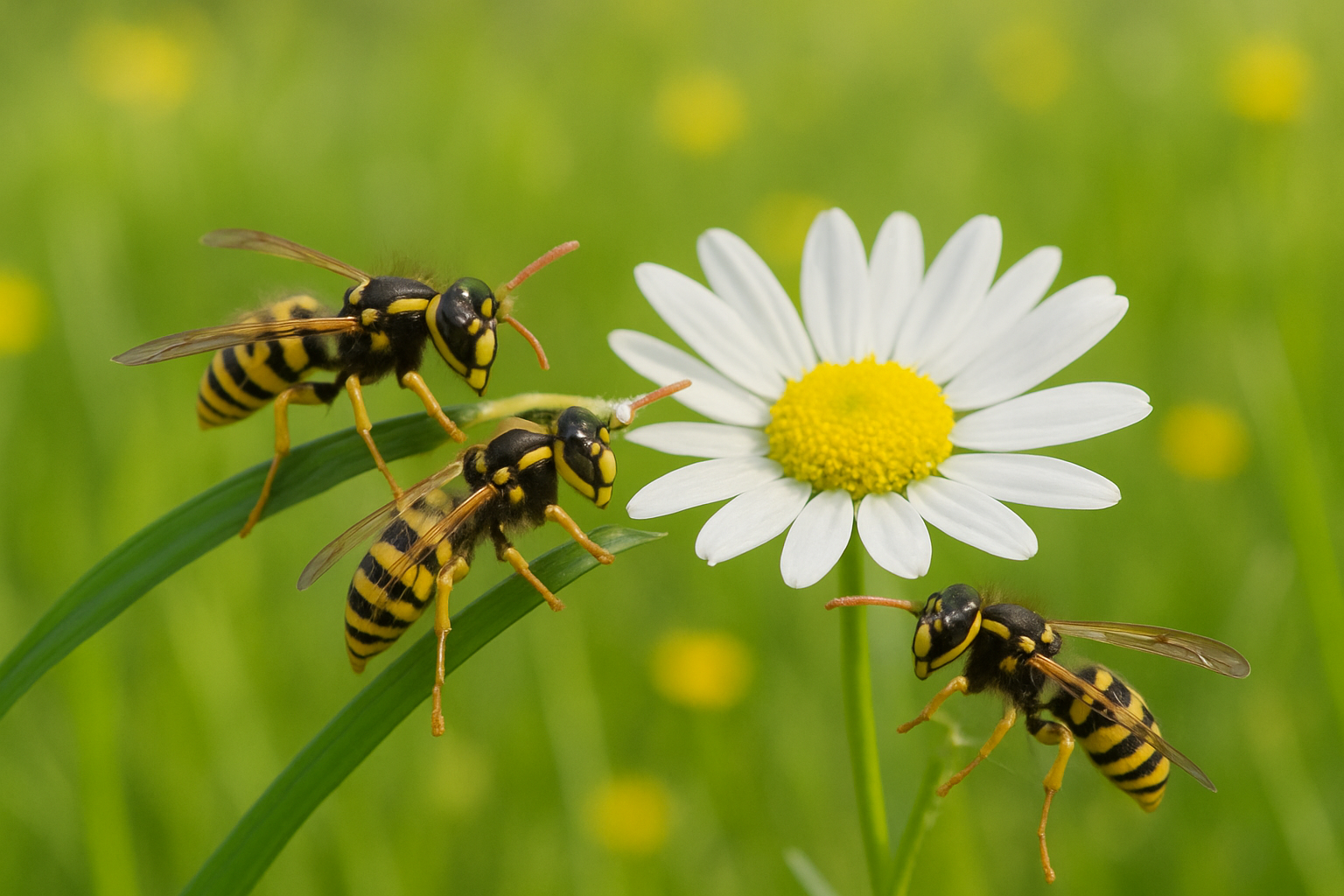
August 11, 2025
Summer is slowly coming to an end, and as we enjoy the last warm rays of sunshine with a soda outdoors, they appear: intrusive black and yellow guests that can ruin our relaxing afternoon. Wasps seem to be particularly aggressive in August. But why is that? Is there a malicious intent behind it?

To understand the behavior of wasps, we need to take a look at their life cycle. A wasp colony is a seasonal community founded in spring by a single queen. Over the summer, she tirelessly raises workers whose main task is to care for the larvae in the nest.
These larvae are fed protein-rich food such as flies or mosquitoes by the workers. In return, the larvae produce a sugary, energy-rich liquid, which they feed back to the workers. It is a perfect symbiosis: the workers hunt for the offspring and are rewarded with an exclusive “energy drink.”
Towards the end of August, the wasp colony reaches its peak. The queen slowly stops producing new offspring and only lays eggs from which young queens and males will hatch for the following year. For the thousands of workers in the colony, this means a drastic change. Their main task is no longer necessary and their food source in the nest dries up.
The result: the “unemployed” workers are effectively banished from the nest and have to go out and find food for themselves. And what do they love? Exactly what we humans love in late summer: sugar.
Suddenly, our ice tea, slice of cake, or ripe fruit become an irresistible source of attraction. The wasps are not primarily aggressive, but desperate and hungry. Their search for energy-rich, sugary food is a survival instinct in the last weeks of their short lives, because the workers die with the first frost.
In addition, there are almost always only two species that are considered intrusive: the German wasp (Vespula germanica) and the common wasp (Vespula vulgaris). Only these two of the hundreds of native wasp species feed on human food and are responsible for the poor reputation of their entire genus.
Why they seem so “aggressive”: Misunderstandings in communication
What we perceive as aggression is often a combination of stress in animals and inappropriate human responses.
Hectic movements: If we swat at a wasp, it interprets this as a direct attack on its life and switches to defense mode.
Blowing on them: The carbon dioxide in our breath is an alarm signal for wasps, which they normally emit in their nest when danger threatens.
The right behavior: How to keep the afternoon relaxed
Stay calm: The most important thing is to remain calm. Slow, gentle movements are not perceived as a threat.
Do not blow on it: Even if it is difficult, do not blow the wasp away.
Cover food: Cover food and drinks outdoors.
Avoid colorful clothing and perfume: Bright colors and sweet scents can attract wasps.
So wasps in August are not inherently malicious creatures. Their intrusive behavior is a last gasp at the end of their life cycle and an instinct to survive. With a little understanding and the right behavior, we can create peaceful coexistence and still enjoy our piece of cake.
Do you have an interesting topic you'd like to report on? Whether you're a professional or a beginner – we're always happy to welcome new people who want to share their exciting topics with us.
Here you can access our event calendar. Sign up directly via 'Anni'!
Copyright 2024 - AStA FH Aachen